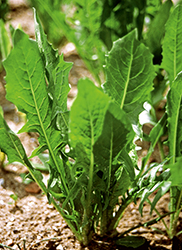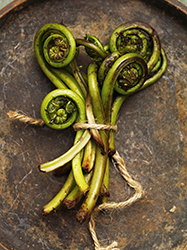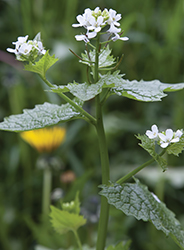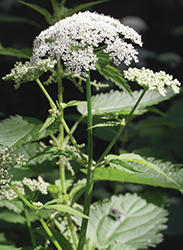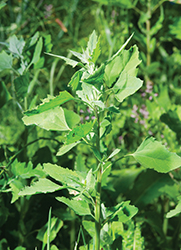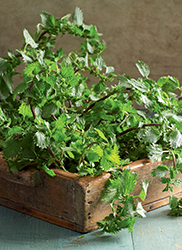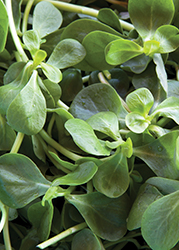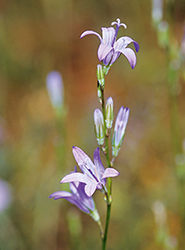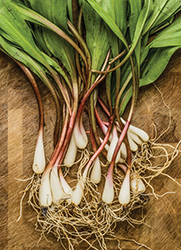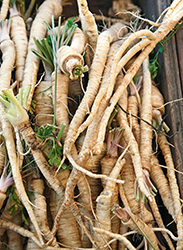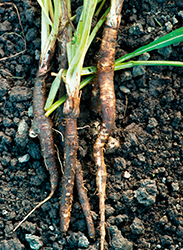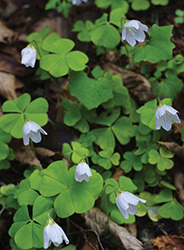Dandelion and other wild foods
There are many wild foods, made popular again by the food-foraging trend, that can be harvested as vegetables. Look for these along roadsides, in vacant lots—and in your own backyard. If you are new to foraging, take precautions to make sure plants are properly identified. Correct identification is essential before eating foraged foods, as many look similar to plants that are poisonous—you don’t want to get them confused. Though wild foods are thought of as foods you forage for in the woods, you can also grow your own. Here are some of the best known.
Dandelion
Taraxacum officinale
Dandelions are known for their bitter leaves, which can be eaten raw when young and tender or cooked as they age to reduce their bitterness. Their uses are similar to those of chicory and endive. Raw leaves in a salad will be less bitter if they are picked before the flower stalk develops—you can add the flowers to salads, too. The long taproot is used in cooking and is roasted to make a caffeine-free coffee substitute. See here.
Fiddleheads
Pteretis pensylvanica
The fiddleheads of the ostrich fern appear for only a few days in spring and are an absolute delicacy, with a subtle flavor of asparagus, broccoli, and spinach. Be sure to get them identified, as the fiddleheads of some ferns are poisonous. Use in sautés, stir-fries, pasta sauces, and quiches. Rinse thoroughly before cooking, remove the brown papery coverings, and rinse again.
Garlic mustard
Alliaria petiolata
Also known as garlic root, Jack-by-the-hedge, poor man’s mustard
On of the oldest spices to be used in European cooking but much maligned as a weed in the U.S., this biennial flowering plant can grow up to 1 m (3 ft) in its second year. Triangular leaves are slightly bitter and can be added to a salad or sauteed like spinach and other greens—but don’t overcook or they will get mushy. The small white flowers are also edible, and the slender taproot can be used like horseradish.
Goutweed
Aegopodium podagraria
Also known as bishop’s weed, ground elder, herb gerard, snow-in-the-mountain
Often found as a potted herb in Europe, goutweed is considered an invasive weed in the U.S. The serrated leaves, whose taste resembles that of parsley or celery, can be used dried or fresh and make a good addition to salads and soups.
Lamb’s quarters
Chenopodium album
Also known as goosefoot, pigweed
This plant branches like a tree and often it appears dusty due to the white coating on the underside of its diamond-shaped leaves. Lamb’s quarters are a European relative to spinach and are an excellent source of calcium, iron, and potassium. In early spring the whole plant can be eaten, but use just the leaves in spring and fall.
Nettles
Urtica spp.
There is an annual and a perennial form of this notorious plant, both oh which have fine hairs on the leaves that cause stinging. Cooking destroys the stinging hairs, and nettles make a nutritious soup and tincture (see here). Always harvest and handle nettles with gloves to avoid irritation.
Purslane
Portulaca oleracea
Also known as pigweed, little hogweed, moss rose
This annual succulent can withstand drought and poor soil conditions. Considered a weed in the U.S., purslane is widely used in East Mediterranean countries. It contains more omega-3 fatty acids than any other leafy vegetable, and it is also a good source of calcium, potassium, and vitamin A.
Rampion
Campanula rapunculus
This biennial plant produces a parsnip-like taproot, which is harvested in winter and can be eaten raw or roasted with other root vegetables. Its new shoots and young leaves can also be picked for salads.
Ramps
Allium tricoccum
Also known as wild garlic, wild leek, wood leek
Ramps can usually be found in deciduous forests throught the eastern U.S. and Canada. Both the leaves and the bulb of this member of the onion family can be used. This ephemeral harbinger of spring is much celebrated in Appalachia, where festivals abound from March to May, and where ramps are often fried with potatoes or scrambled with eggs and served with bacon, pinto beans, and cornbread. They can be used in place of onions, garlic, or shallots and are also a good candidate for pickling.
Salsify
Tragopogon porrifolius
Also known as vegetable oyster
This biennial plant has a long, slender, pale brown or white taproot similar to a parsnip, which is cooked, steamed, or baked as a root vegetable. In Australia Mammoth Sandwich Island is a popular cultivar, grown in temperate regions in the same way as carrots and parsnips. The root grows to 23 cm (9 in) long and 6 cm (2 1/2 in) wide. The foliage can be blanched to reduce its bitterness and eaten as a leafy vegetable. Before cooking, scrub the root under cold running water, peel with a sharp knife, and place in water with a little lemon juice. Slice and sauté in butter as a side dish.
Scorzonera
Scorzonera hispanica
Also known as black salsify, black oyster plant
This perennial plant has a long, thin, parsnip-like root with purple-black skin and white flesh and a unique earthy flavor. It produces attractive purple daisy-like flowers, which are also edible. The skin is inedible, however. Boil the roots for about 20 minutes, then remove the skin to reveal the white inner core. Cook the peeled root with other root vegetables.
Wood sorrel
Oxalis stricta
Sour trefoil, stickwort, wood sour
Often confused with clover, wood sorrel can be identified by its heart-shaped leaves (versus clover’s oval leaves). It can be found from spring to fall in lawns and along roadsides. Its lemony leaves go well with fish and steamed vegetables. Although unrelated to the sorrel you might see sold as an herb, the culinary uses are the same.
Health benefits
Wild plants have a long history of use as medicine, and a growing body of research documents their potential to improve health. Stinging nettles, for example, are an age-old remedy for muscle and joint pain, eczema, and anemia. Research now suggests that herbal formulas containing nettles can reduce hay fever symptoms and ease urinary problems related to benign prostatic hyperplasia. Dandelion has strong diuretic powers, and herbal formulas of the leaf are used for water retention and kidney disorders. Both the leaves and roots are thought to act on the liver and gallbladder and to stimulate bile to help cleanse the body of toxins.
The health benefits of other wild foods are only just starting to be explored.
